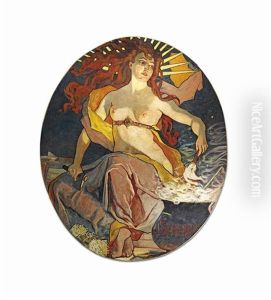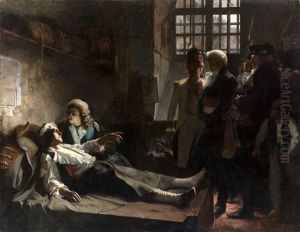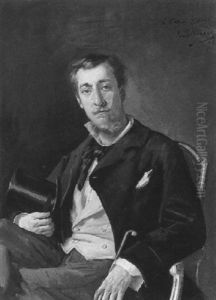Jean-Jacques Scherrer Paintings
Jean-Jacques Scherrer was a French academic painter born on May 4, 1855, in Paris, France. He was known for his historical and religious paintings, which were characterized by their fine detail, academic technique, and often grandiose subject matter. Scherrer studied at the École des Beaux-Arts in Paris, which was the foremost art institution in France at the time, under the tutelage of renowned artists such as Alexandre Cabanel.
During his career, Scherrer exhibited his work at the Paris Salon, an annual exhibition held by the French Academy of Fine Arts. His participation in the Salon was met with acclaim, and he gained a reputation for his meticulous approach to painting. Scherrer's works include 'Entrance of the Crusaders into Constantinople,' which earned a medal at the Salon of 1881, and 'The Deposition,' a poignant representation of Christ's descent from the cross.
Despite his success, Jean-Jacques Scherrer remains a relatively obscure figure in art history, overshadowed by some of his contemporaries. His style was firmly rooted in the academic tradition, which became less fashionable with the advent of Impressionism and other modern movements that were gaining momentum during his lifetime. Nevertheless, his paintings continue to be appreciated for their technical skill and historical significance.
Scherrer's contributions to art extend beyond his historical and religious works. He also took an interest in portrait painting and contributed to the decoration of several public buildings in France. His work reflects the broader cultural and artistic trends of the Third Republic in France, a period which saw the rise of nationalism and a fascination with history and heritage.
Jean-Jacques Scherrer passed away on June 17, 1916. His body of work remains as a testament to the academic art movement of the late 19th and early 20th centuries, and his paintings can still be found in museums and private collections around the world. Despite the changing tides of artistic preference, his work provides valuable insight into the academic practices of his time and the historical narratives that captivated the audiences of his era.















